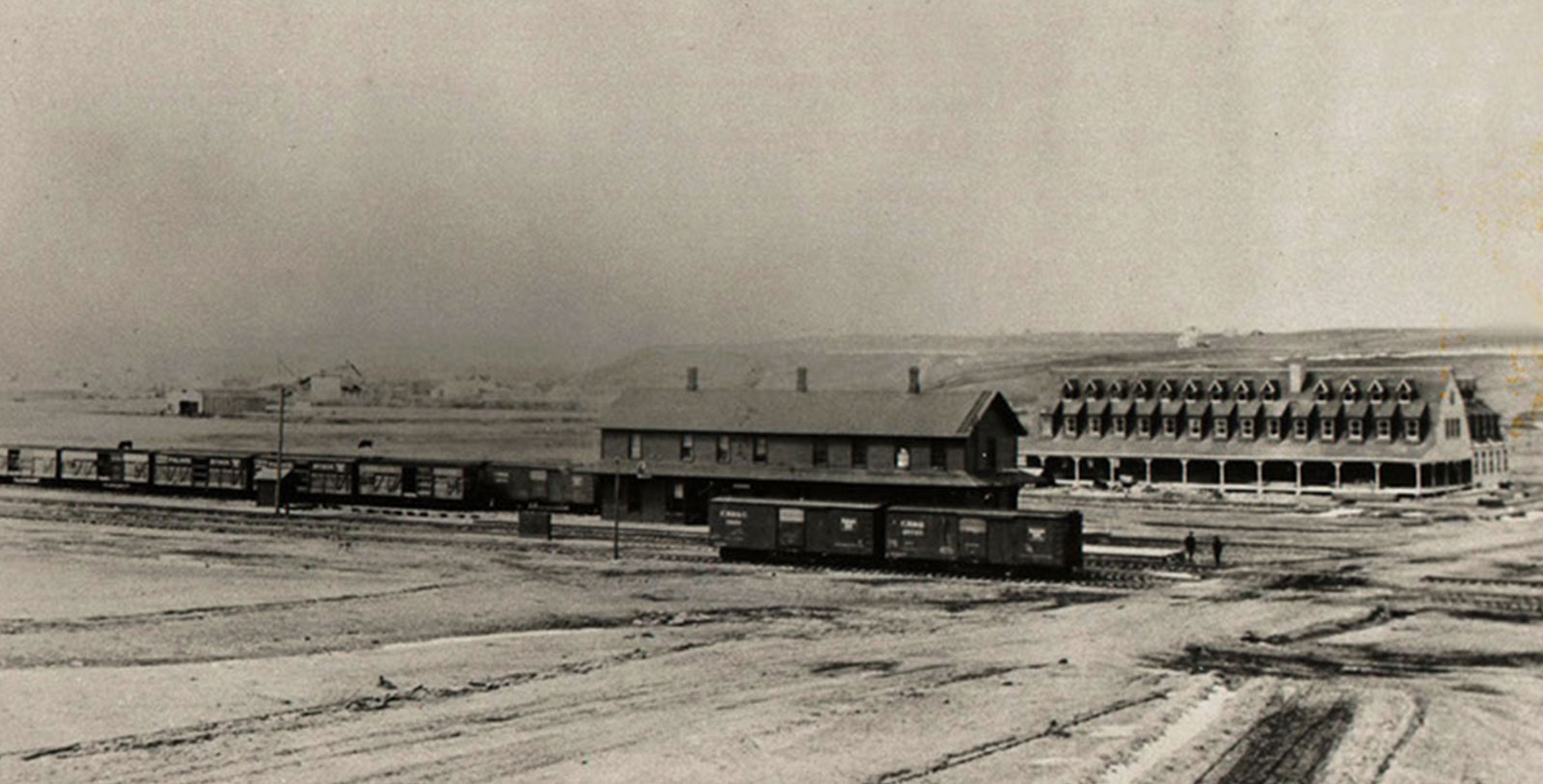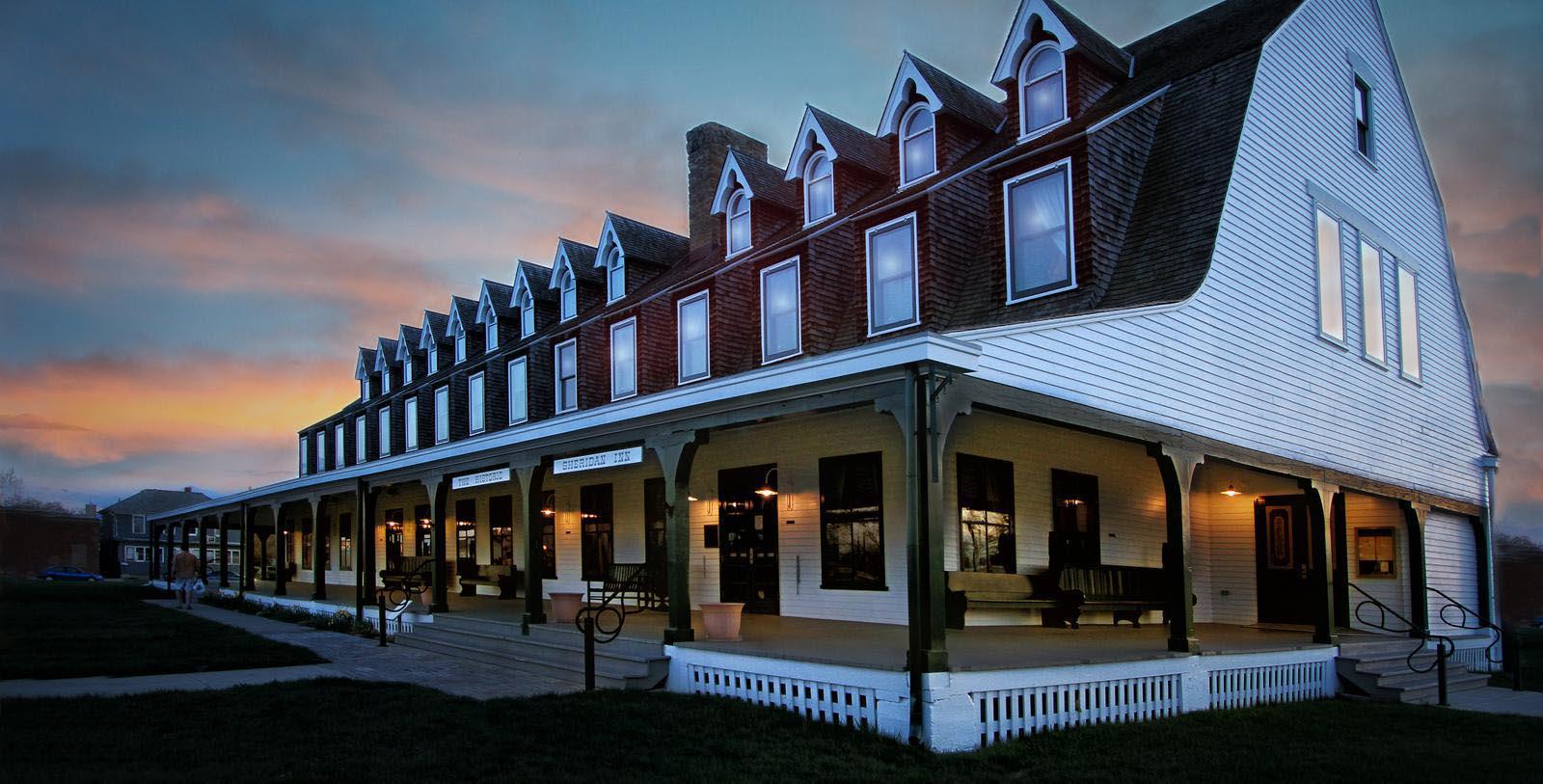Receive for Free - Discover & Explore eNewsletter monthly with advance notice of special offers, packages, and insider savings from 10% - 30% off Best Available Rates at selected hotels.
history
Discover the Sheridan Inn with its elements of Scottish design.
Sheridan Inn was constructed at a time when the United States was defined by great economic prosperity, industrial expansion, and significant social reform.
The Sheridan Inn represents the establishment of modern culture in areas still ""wild and woolly"" prior to the arrival of railroad infrastructure. When the Sheridan Inn opened in 1893, it was said by many to be the finest hotel between Chicago and San Francisco. It immediately became the social center for the Big Horn country area which at that time attracted many big game hunting parties, including notables from all parts of the United States.
The Chicago, Burlington, and Quincy Railroad built into Sheridan, Wyoming, and constructed the hotel as a feature of its development program. George Holdrege, general manager for the railroad, conceived the idea for the hotel and gave to Thomas R. Kimball, an architect of Omaha, Nebraska, the task of designing the structure.
Kimball modeled the Inn generally after a Scottish inn that he had visited and liked. Construction started in December 1892 and was complete by May 1893. The Inn had 64 bedrooms on the second and third floors, each with its own dormer window and the first floor featured a 160-seat dining room as well as a lobby, kitchen, and the famous “Buffalo Bill Bar.”
The Sheridan Inn is credited with having had the first bathtub and electric lights in north central Wyoming. Besides hosting many distinguished guests, the Inn provided lodging for railroad workers, new residents of Sheridan and Inn employees, and provided meals for many others in the Sheridan community.
William F. Cody, better known as Buffalo Bill, is said to have led the grand march at the opening of the Inn. He operated the Inn from 1894 to 1896. Buffalo Bill Cody was known to sit on the expansive veranda and audition acts for his 'Wild West Show' on the front lawn.
The Inn remained opened throughout the years until the 1960s, which brought the end of passenger rail service, the arrival of Interstate-90, and the closure of the Sheridan Inn. The hotel was designated by the US Secretary of the Interior as a National Historic Landmark in 1964. The Inn was almost demolished in 1965-66 but it was purchased at the last moment by Neltje Kings.
She immediately began renovations and in 1967 the bar was reopened. Renovations continued through the years, restaurants and events cycled in and out of the Inn, but efforts to finish renovations on the second and third floor were unsuccessful. On October 25, 2013, Bob and Dana Townsend purchased the Inn. Renovations to the building, including the second and third floors, were completed, one after another. The building now features a geothermal heating and air conditioning system, and although it is one of the oldest buildings in Wyoming, it is one of the most energy efficient.
The historic Sheridan Inn has maintained much of the original first floor lobby with the original beams, columns, fireplace, and front desk. The decorative paint scheme has been restored from the original design, as well as the original plaster ceiling, floor covering, lighting, and furniture. Historical photographs, which are on display, represent the early history of the Sheridan Inn and the many facets of the legendary Buffalo Bill.
In January 2015, the restaurant, The Open Range, opened its doors and on May 15, 2015, the hotel portion of the Inn opened for guests for the first time in over 50 years. The Restaurant and bar is currently closed and will re-open summer 2023. There are now 22 newly renovated guestrooms, each featuring their own bathroom.
-
About the Architecture +
"The Chicago, Burlington, and Quincy Railroad built into Sheridan, Wyoming, and constructed the hotel as a feature of its development program. George Holdrege, general manager for the railroad, conceived the idea for the hotel and gave to Thomas R. Kimball, an architect of Omaha, Nebraska, the task of designing the structure.
Kimball modeled the Inn generally after a Scottish inn that he had visited and liked. Construction started in December 1892 and was complete by May 1893. The Inn had 64 bedrooms on the second and third floors, each with its own dormer window and the first floor featured a 160-seat dining room as well as a lobby, kitchen, and the famous “Buffalo Bill Bar.”"































